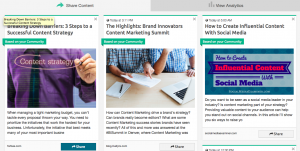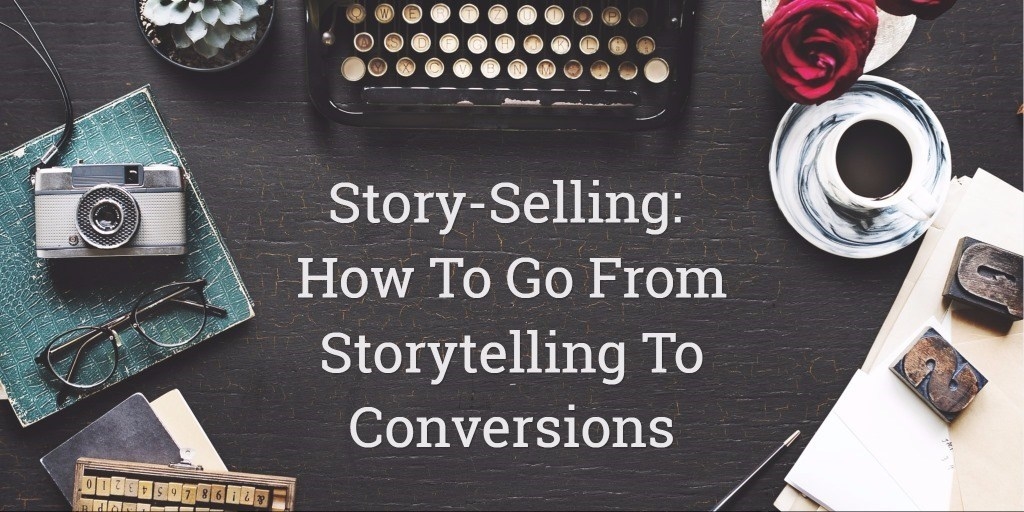
Digital business is in constant flux. As more brands than ever flood the already-saturated marketplace, producing innovative content is no longer a just supplement to marketing strategies. It is a cornerstone.
With the fierce competition of native advertising and social media marketing, the power of storytelling cannot be underestimated. According to Harvard Business School professor Gerald Zaltman, 95% of our purchase decision making happens within our subconscious mind. In terms of everyday commerce, this means that if you’re selling your product or service online, your ability to intrigue an audience on a personal level can be a difference-maker in boosting conversions and cementing your brand on social channels.
Keep in mind, the traditional marketing tactics that worked on previous generations do not have nearly the same effectiveness on today’s consumers. Authenticity is valued now more than ever. Regardless of what industry you are in, your ability to deliver compelling, empowering brand material is what sets your business apart from the rest. Here’s how you do it.
Identify The Human Truth
The term “Human Truth” is often used in advertising contexts and is centered around the idea of motivating viewers because they feel an emotional connection arising from the impact of an accepted concept. In turn, they are left agreeing with your message.
Above all else, great storytelling comes from ability to hit the mark and create relatable brand communication that provides answers to specific problems. Why exactly do people need your brand? Why should they choose you over anyone else?
As an ecommerce business, identifying the answers to these questions is vital to your success. For example, Harry’s, an online shaving retailer, emphasizes the issues that come with going the cheap route with razors.

Right on the homepage, the first line of copy proclaims: “Harry’s was built out of respect.”
The second paragraph dives deeper in to the human truth of shaving: “Like most of you, we’ve long had to choose between over-priced razors that disrespect your intelligence, and cheap razors that disrespect your face.”
This line does a phenomenal job in painting a picture of the common struggle every frequent shaver deals with. As the visitor navigates the page, Harry’s goes into further detail about the superior design and quality construction of the product. Throughout this problem-solving theme, visitors are left with a clear message: Harry’s understands the everyday issue and has the solution.
Using storytelling to boost conversions relies heavily on how well you present a common problem, and how your brand goes the extra mile in solving it.
Demonstrate Authority
Perhaps of the most important factor in quality storytelling is showcasing that you are an expert force in your industry. To achieve this, you need to establish a strong degree of external trust in your operation.
Now, building trust and authority is not something that happens overnight. This will require a good deal of time and consistency to properly convey your unique selling proposition (USP).
With all the competing products, services, and solutions hitting customers in the face, most of them are not just looking for anyone to help solve their problems; they’re looking for someone with the credentials to guide them to an in-depth solution.
There are a number of necessary elements to add to your storytelling tactics that show authority in your brand messaging.
Testimonials are one of the best ways to show outsiders that you know what you’re doing. Reinforcement from a third-party goes a long way. Nearly 9 out of 10 customers claim that online reviews influence their buying decisions. Take a look at support software Desk’s Customer Stories section:
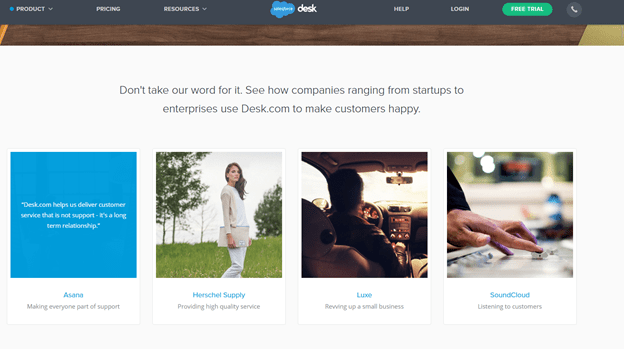
They’ve put together a splattering of high-profile clients with detailed, data-backed testimonials from each. These stamps of approval act as supplements to their storytelling and give new customers clarity that they are the best option to buy from.
Statistics showing your company’s achievements are another great way to validate your brand. This example is from marketing software HubSpot’s front page:
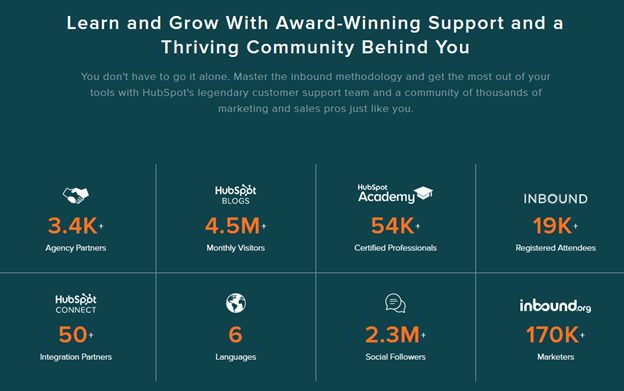
Basically, incorporating hard numbers like these onto your platform makes your storytelling more believable.
Product features bring up the last but most significant part of the authority trilogy – a long list of uses and benefits serves to instill trust in your customers that your product has them covered. Ecommerce platform Shopify’s solution page lists 60 features across 9 categories:
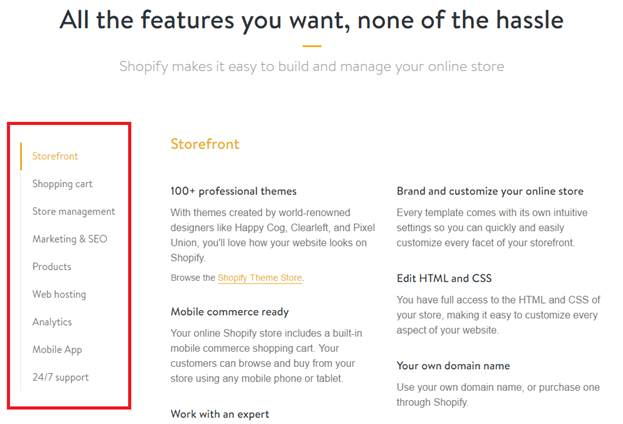
That’s everything that their customers – ecommerce retailers – could possibly need. And more.
In a lot of cases, simply being an awesome brand is not enough anymore. Prospects want to see the data to back up your claims. Think of it like a job interview. The whole point of telling a story is to display your knowledge and skills, and prove why you’re the right person for the job. If you don’t have the track record to reinforce your claims, you have no bargaining authority and the employer has little reason to believe you’d be a good fit. It’s the same with businesses and customers.
Storytelling combined with proper validation should answer these two consumer questions:
· “Does this brand understand my needs?”
· “Do they know what they’re doing?”
Use Your Best Storytellers
Successful storytelling goes far beyond just your ecommerce website. Maximizing conversions requires effort across your entire marketing strategy. At the end of the day, customers trust “humanized” brands.
Company storytelling comes in all shapes and sizes. Combining it with the right influencers remains one of the most tired-and-true ways to bring a human element to brand messaging and expand reach. Studies have shown that this method delivers an 11X higher ROI compared to other forms of digital marketing.
Using an influencer as your storyteller essentially allows you to explore deeper within a chosen audience in an authentic, non-intrusive way. The key is finding a prominent figure that fits the right tone and shares a similarly targeted following.
Let me give you a first-hand example. I write for quite a few major business and tech publications; I cover digital marketing, social media, branding, startups, ecommerce, and the like. My articles naturally talk about a lot of tools in this space and how to use them. Social media monitoring tool Brandwatch, who apparently have an “Influencer Manager,” spotted a few mentions of their tool and promptly made contact with me:
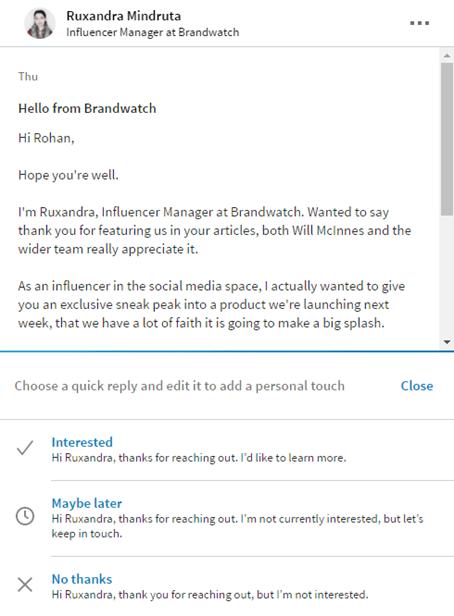
This was a totally non-intrusive and legitimate attempt, via an appropriate platform (LinkedIn in this case), to build a relationship with an industry writer.
The most important thing to keep in mind is that both you and the influencers need to have stories that intertwine.
Bigelow Tea used an incredibly smart influencer strategy to dramatically boost their online sales. Their storytelling aims to encourage healthy living and emphasize the positive effects of drinking tea. For the campaign, they targeted Ashley Thurman, a blogger from Cherished Bliss.
Her content provided readers with a guide on how to make flower pots. At the end of the piece, she incorporated a subtle mention about making iced tea with Bigelow and lemonade ice cubes.
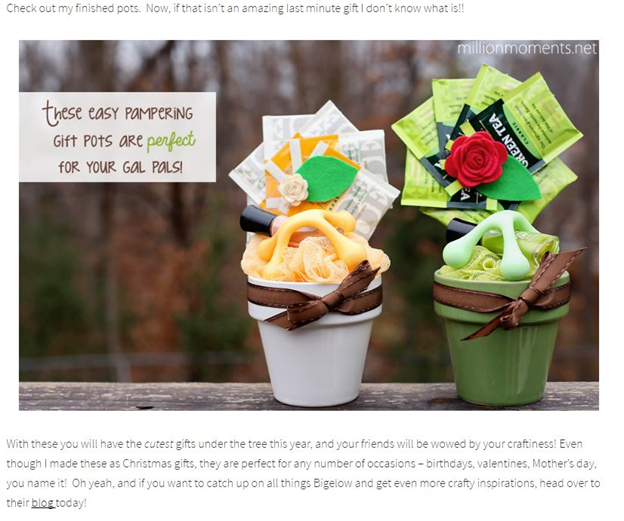
Consequently, Bigelow experienced an 18.5% increase in sales. The reason this campaign worked out so well is that both parties were able to naturally combine their storytelling abilities and produce valuable, original content that led their audience to their product.
In a survey conducted by Twitter and Annalect, nearly 40% of respondents said they relied on recommendations from influencers when making purchasing decisions.
Regardless of how great your storytelling is, making use of the right outlets is crucial in bringing widespread attention to your messaging. More exposure = more conversions.
Parting Words
Storytelling is a project in which there are no shortcuts. It may take a good deal of time before you find a flow and are able to build up the climax. But, once you start using it effectively in your content marketing strategy, you’ll find it much easier to nudge your customers down your sales funnel.
Remember, customers want to hear your stories. Get creative and find some out-of-the-box ways to give them the scoop!
* Adapted lead image: Public Domain, pixabay.com via getstencil.com
The post Story-selling: How To Go From Storytelling To Conversions appeared first on Search Engine People Blog.
(60)






